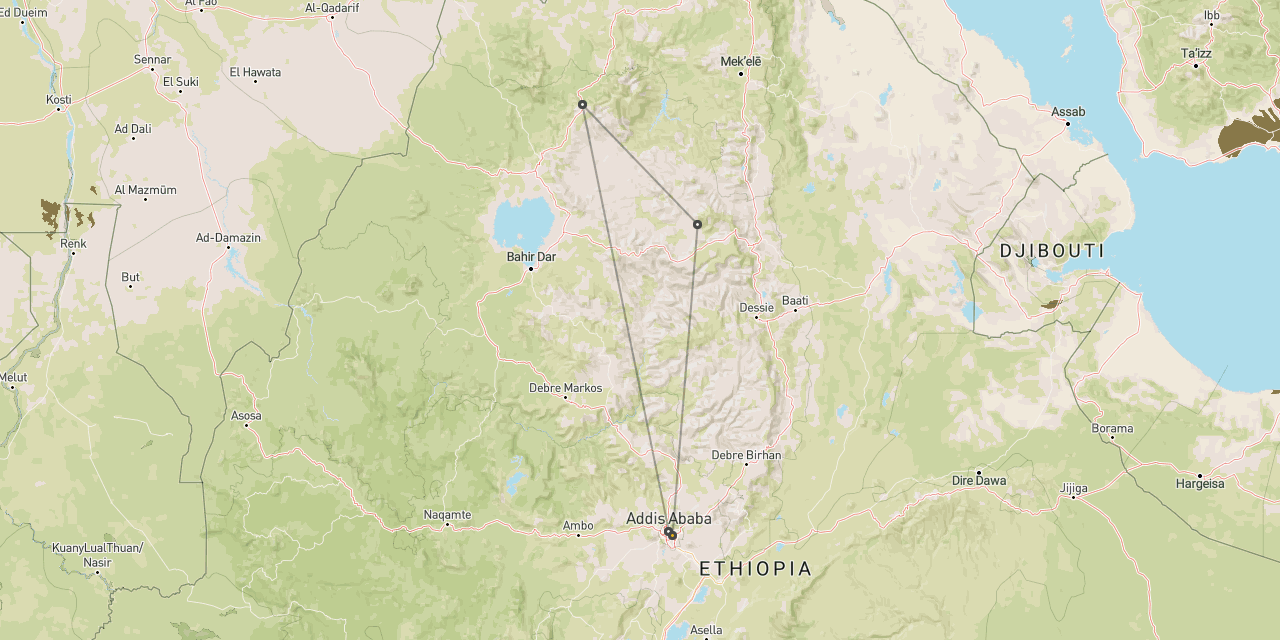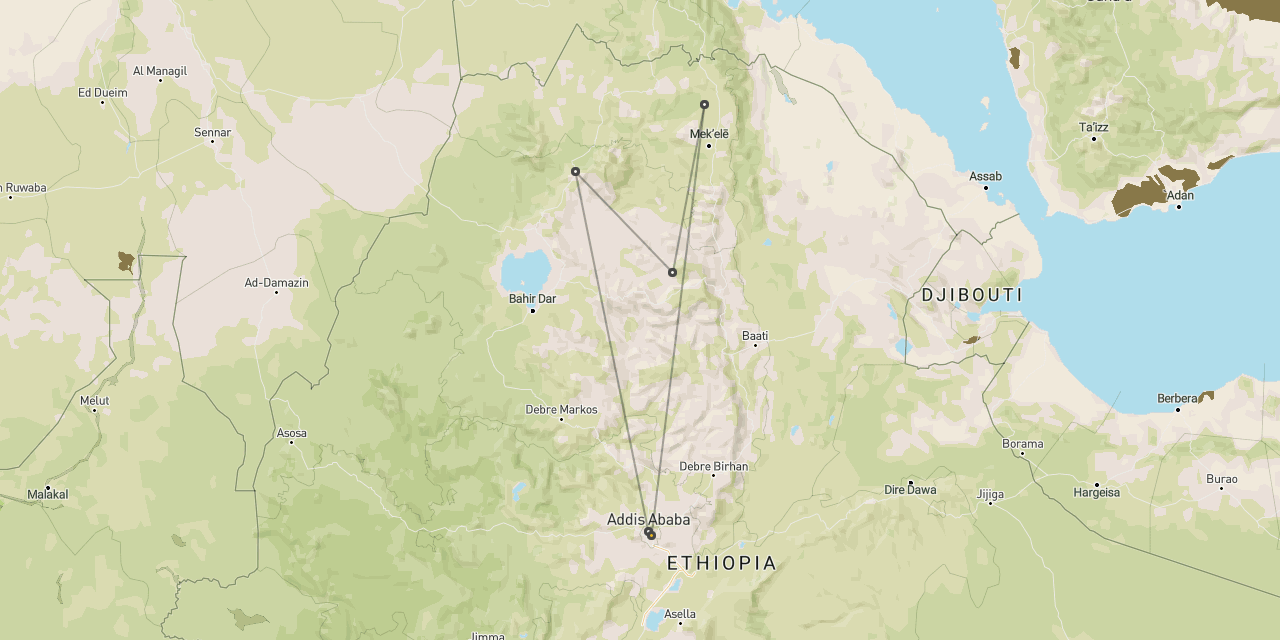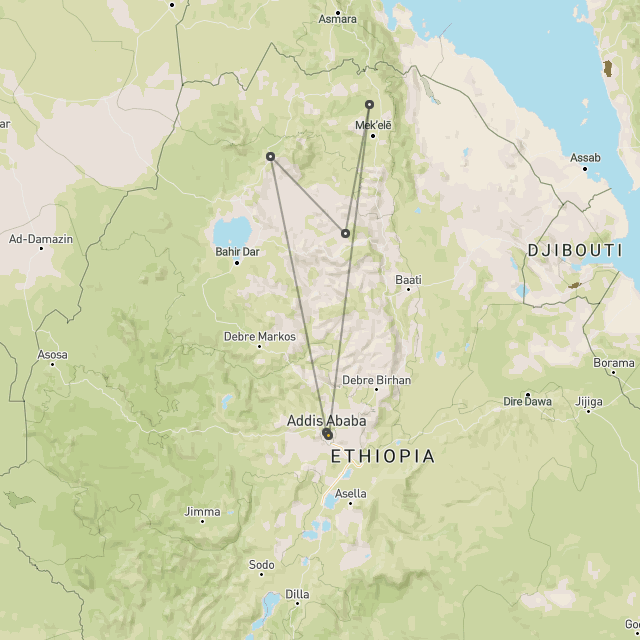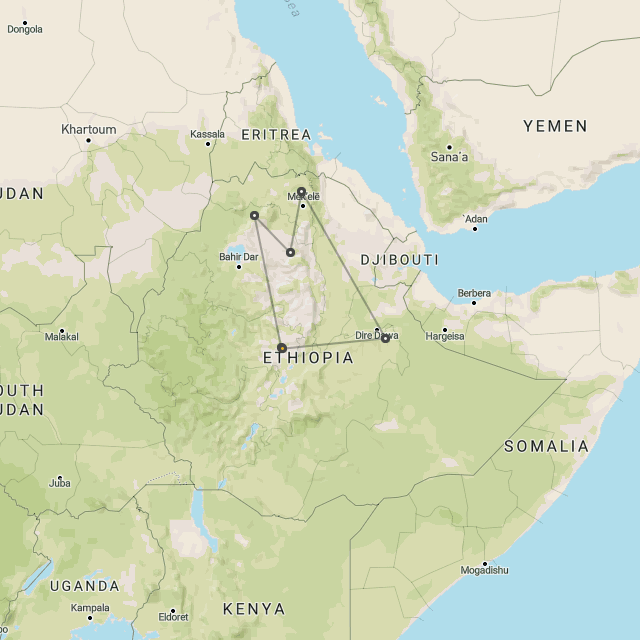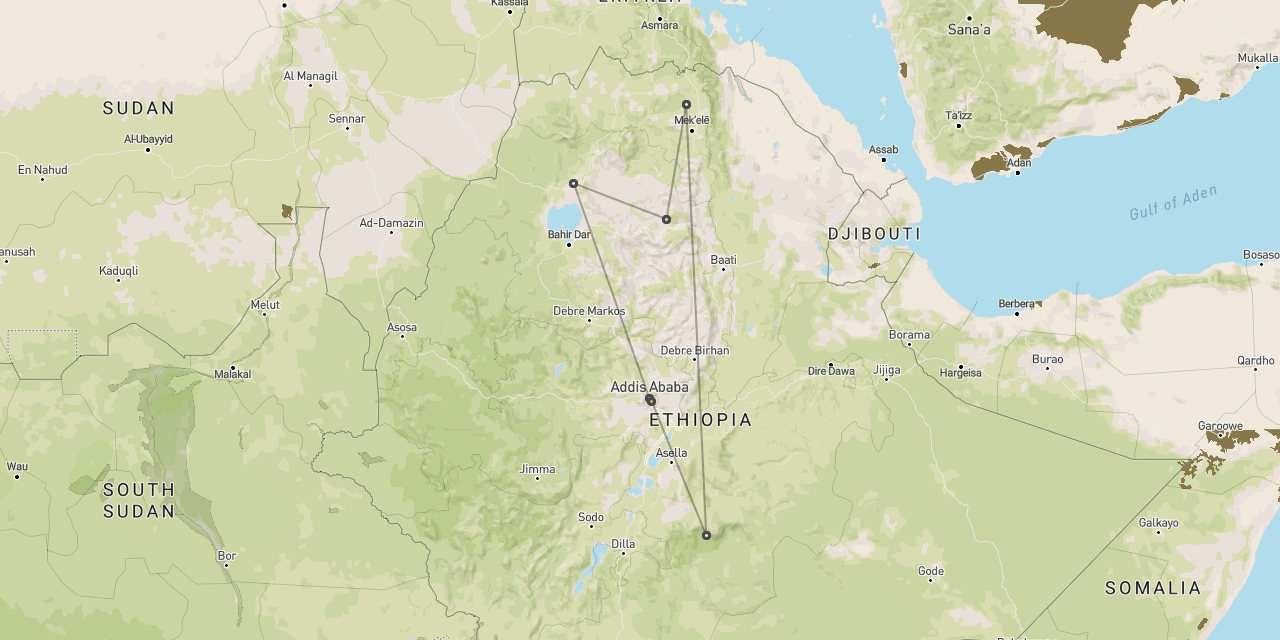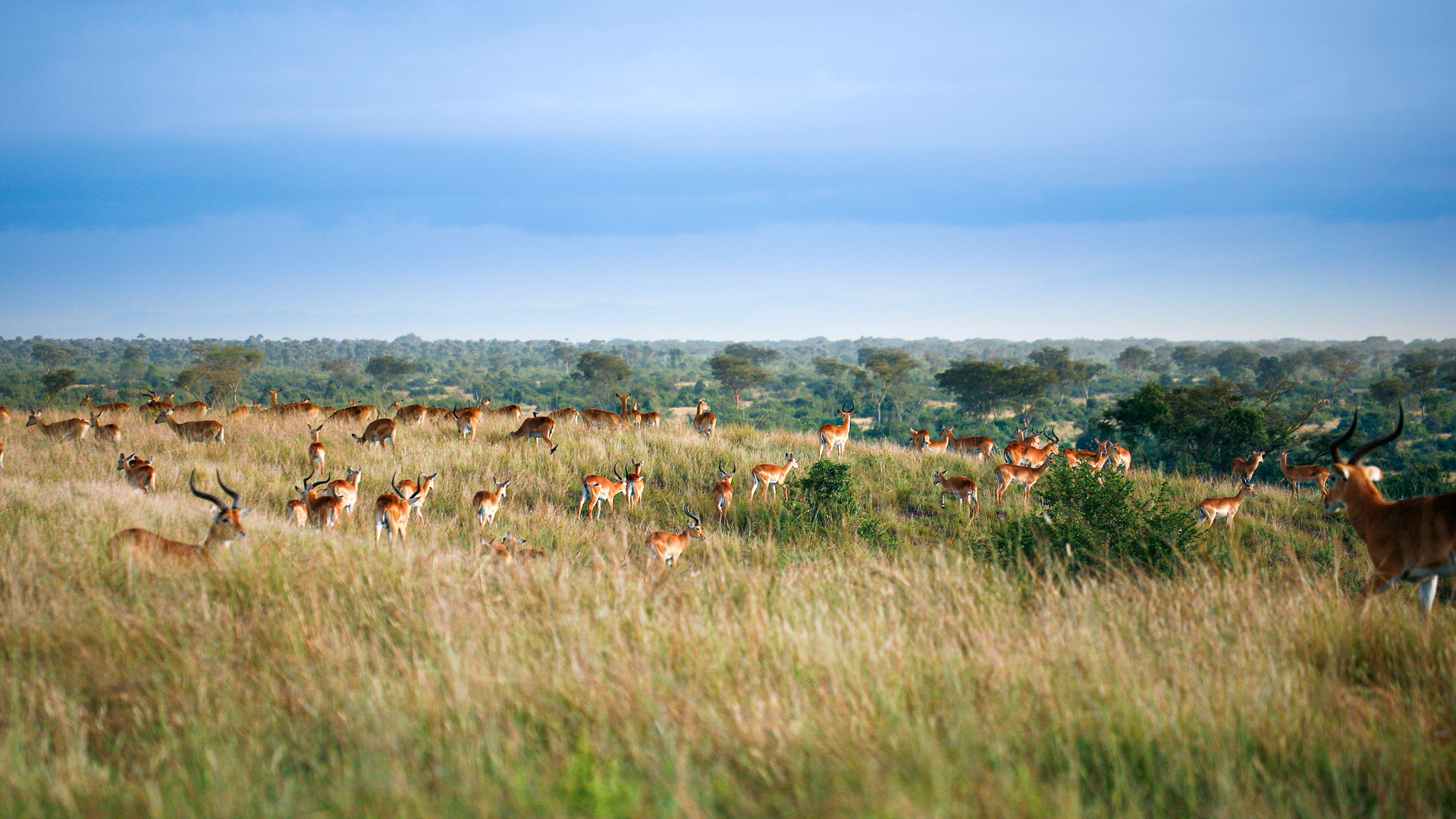
Safari to Gambela
Gambela
is an inaccessible reserve,
with a huge migration
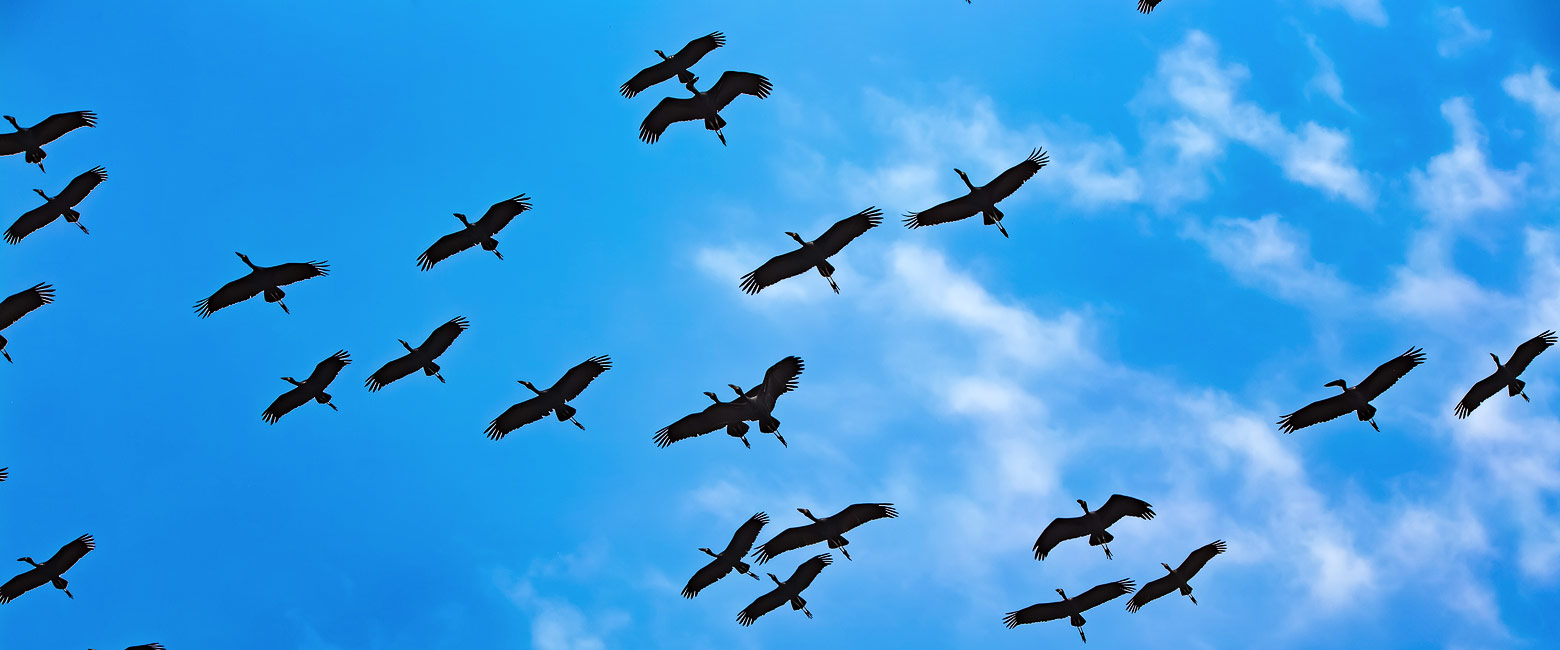
an incredible wilderness, devoid of people
Set in the extremely remote and difficult to access southwest of the country, up against the border with South Sudan, Gambela National Park is a beautiful and very remote wilderness.
At 5060 square kilometres, this is Ethiopia’s largest protected area. It is contiguous with the 22,800 square kilometre Boma National Park in South Sudan, the two adding up to a conservation area roughly the same size as the Serengeti.
The Baro River flows along the northern and western boundaries of the park, with some significant tributaries crossing through the area.
Kob migration
The combined reserves are home to the second largest animal migration in Africa.
During the Jan-Apr late dry season, an estimated 1.2 million endemic white-eared kob antelopes move from the wetlands of Boma, across the national border into Gambela.
Sometimes travelling in herds 50 miles long and 30 miles wide, it’s estimated that up to 250,000 of these animals can be seen at any one time.
Wildlife
Beyond the migration the plains are home to buffalos, tiangs, roans and Lelwel hartebeest, whilst the extensive marshes conceal endemic Nile lechwes and rare shoebill storks.
Forested areas play host to a number of primate species, including olive baboons, patas monkeys and guereza monkeys.
The rivers host good numbers of hippos and crocodiles, as well as over 110 different species of fish, including tigerfish and Nile perches.
Some of the headline species here, including elephants, lions and Nubian giraffes are under severe threat of local extinction due to hunting and poaching.
Conservation
Since its creation in 1973, Gambela has never really been a properly functional national park. The government has consistently failed to provide adequate protection for the land and its wildlife, whilst tourism infrastructure remains exceedingly limited.
Very little is known about the actual state of the reserve, except that aerial animal counts have repeatedly reported that many species are severely depleted.
The reserve gains a certain amount of natural protection thanks to its large size and remoteness, but with the increase in human populations and the constant political upheaval in South Sudan (which has spilled a flood of refugees across the border into this part of Ethiopia), the threats are very real.
Fortunately in 2020 an excellent non-profit organisation called the Wildlife Conservation Society started work in Gambela, acting in partnership with the local park authorities to bring higher levels of monitoring and protection to the reserve, so we are now very hopeful that this marvellous park will go from strength to strength.
Map
Gambela is virtually inaccessible by conventional means. We estimate that fewer than a hundred people manage to get into the reserve each year, possibly a good deal fewer than that.
The road that winds its way west is tortuous and takes days to cover. Then once you arrive at the park, the road network for wildlife viewing is extremely limited. If you tried to visit this way, then chances are the trip would be frustrating and fruitless.
Although the Baro River and its tributaries would appear to be ideal for water-based expeditions, we have been advised by the local experts that this is not recommended.
The only way to presently access Gambela satisfactorily is by helicopter, supported by a mobile tented camp, flying from area to area in search of wildlife, landing and heading out on foot. This may be an expensive undertaking, but it certainly is extraordinary.
Obviously all such trips are operated in the company of a serious guide. We most commonly used the excellent Graeme Lemon, a Zimbabwean who has lived and worked in Ethiopia for many years. He’s perhaps the only person we would trust with a safari of this nature.
These safaris usually last 3-7 nights, typically starting in Addis Ababa, heading out to Gambela and then continuing south to the remote Southern Omo Valley, before returning back to the capital.
An 8-14 night safari of this nature is truly something beyond the ordinary, the kind of thing that experienced safari travellers dream of doing before they die!
Seasonality
The best time to visit Gambela is generally considered to be during the Nov-Mar dry season and especially Feb-Mar for the kob migration.
Timing a visit to coincide with this migration can be a little tricky, since the animal movements do vary depending on how much rain falls in a particular year. Usually we reckon on February being the best bet, but in 2020 the main herds didn’t really start to arrive until the end of that month. The problem with leaving it later is the ever increasing risk of significant rainfall. Early to mid March is probably the best bet. The herds tend to head back into South Sudan during June.
The converse Apr-Oct green season is particularly long and wet in this area, especially Jul-Sep, when rainfall peaks at around 200mm/4″ each month.
Helicopter safaris can operate throughout the year, but any safari that depends on vehicles (notably when we need to drive in a substantial support camp) are virtually impossible throughout the rainy season.
Temperatures should be comfortable year round, although it can get a little bit humid and muggy in advance of the rains, which is unfortunately the time that you are most likely to visit.
Getting there
Since Gambela is explored by helicopter, it is easy to connect to anywhere in the country. Trips can start or end at the main airport in Addis Ababa.
If you are planning to explore the north of the country, then you can be collected from locations like Lalibela or Gondar.
Perhaps the most popular combination is with the equally remote Lower Omo Valley to the south.
private-guided helicopter expeditions
let us know your thoughts about Ethiopia
and we will help you create the perfect trip
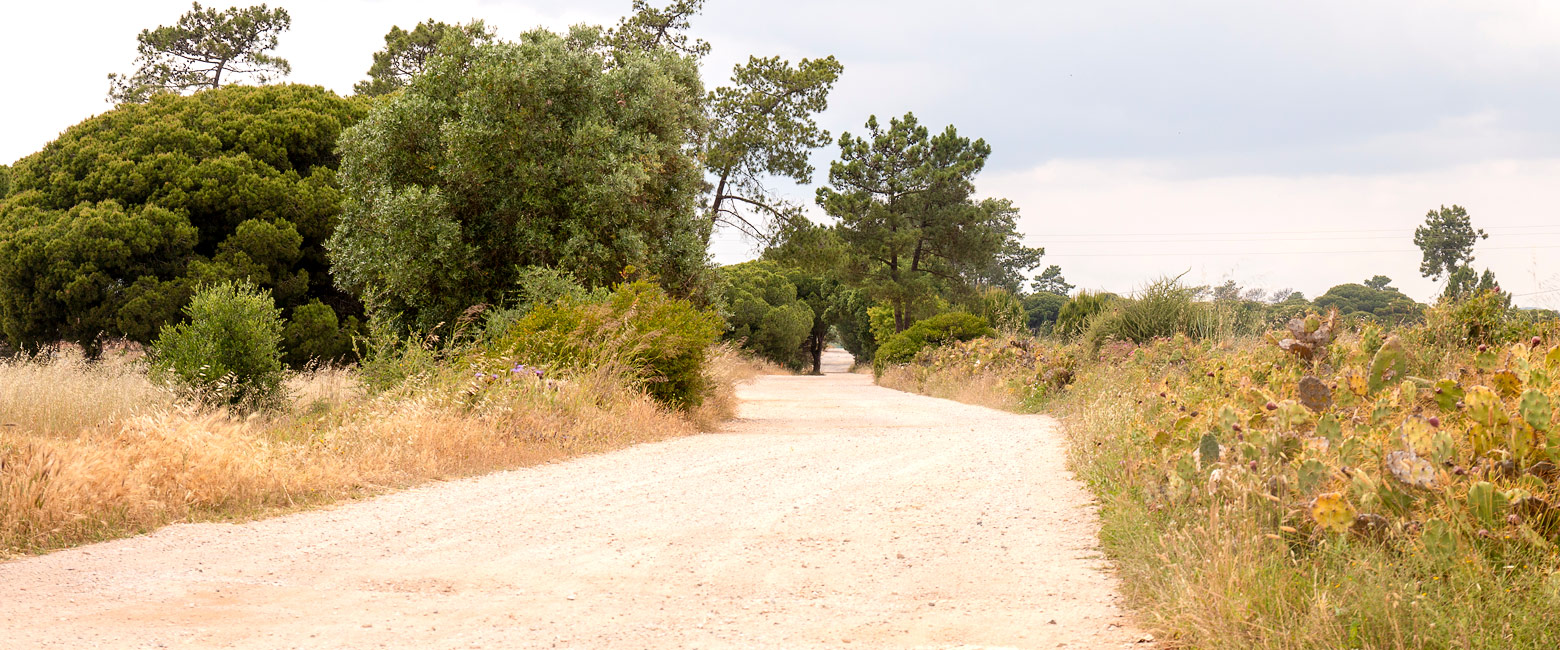
Extraordinary tailor-made adventures,
from earthy and edgy to easy and extravagant
From around USD 2500 per person, you set the ceiling
Sample Trips
Here are some of our popular trip shapes

Get started on your trip
It’s never too soon to get in touch, we are here to help with every stage of your planning.
Best Lodges
We regularly inspect and photograph all of the the best lodges, to ensure that we always recommend the most suitable options
Key Locations
Take a look around related locations. Click ‘View more’ to explore locations further afield.
Where Next?
Where Next?
We offer trips to dozens of fabulous countries.
Might one of these might be your next great adventure?

Please rotate your screen.
